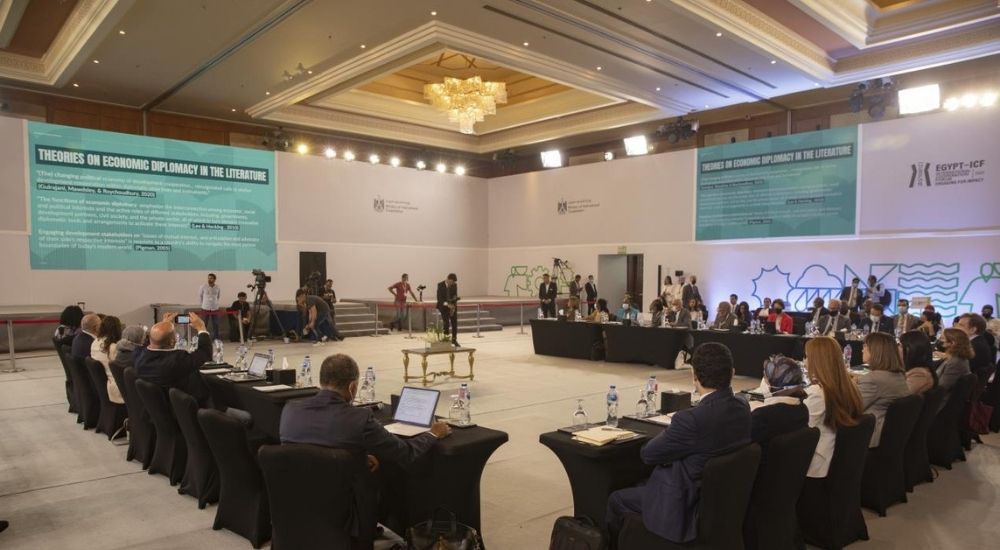Egypt’s ongoing 377 official assistance projects worth $25 billion mapped to sustainable goals

Egypt’s pioneering model for mapping Official Development Assistance with Sustainable Development Goals can be rolled-out to the region and beyond, the Egypt-International Cooperation Forum heard. Egypt’s ODA-SDG mapping exercise launched earlier this year showed how the country’s 377 ongoing development projects, worth more than $25 Billion, were impacting its people and enabling its decision-making capabilities by highlighting opportunities and gaps in development cooperation, including financial and technical assistance.
Opening the second day of the inaugural Egypt-ICF, HE Dr Rania A. Al-Mashat, Egypt’s Minister of International Cooperation, explained how the ODA-SDG mapping model can help better understand the real-world impact of sustainable development projects on citizens in developing economies across the world.
Underlining the importance of working with other countries to develop their own bespoke ODA-SDG mapping models, Al-Mashat said “We will not be able to move forward unless we have strength and multilateralism.
“We need to be more inclusive, there needs to be predictability when it comes to financing and the importance of multilateralism to accelerate the sustainable development goals,” she said, outlining the integral role the ODA-SDG map can play in empowering developing economies.
In light of the Government of Egypt’s political will, the Ministry of International Cooperation is pushing towards inclusive and impactful engagement integrating the private sector and civil society.
“All the UN projects are being implemented through NGOs and civil society across Egypt. The ODA-SDG model offers a robust example of how we can align globally on the sustainability agenda because of its adoptability and scalability.”
The UN’s Resident Coordinator for Egypt, Elena Panova, said Egypt’s “pioneering” ODA-SDG mapping exercise carried out by the country on a national level could become a global practice and support the work done by the Organisation for Economic Co-operation and Development to map ODA worldwide.
“We believe [the mapping exercise conducted by the Ministry of International Cooperation] could be replicated in other countries,” Panova said at the Egypt-ICF on Thursday, during a workshop entitled, ‘Mapping ODA To SDGs: A Tool for Effective Policy Making’.
“The way forward could be that this methodology is being taken further by other countries thus complementing the OECD’s work,” Panova said.
Joining H.E. Al-Mashat and Panova for the opening session, Alfredo Abad, Head of Regional Representation, European Investment Bank, said the pathway set out by Egypt’s ODA-SDG map, “helps us to understand at a government level where we position ourselves.
“This is a very important tool to engage in dialogues with our partners. The challenge is to get accurate data and there are different ways of looking at the same things. But the approach of the Ministry of International Cooperation and the team is commendable. Integrating, including everybody, definitely this is the way.”
Echoing the positive sentiment around the novel mapping model, Marina Wes, Country Director, Egypt, Yemen and Djibouti, Middle East and North Africa, at the World Bank Group, said “It’s incredibly important for future decision-making prioritization. It’s really pathbreaking to see the leadership taking on this. I want to emphasise the timeliness of this exercise, as many of us prepare new strategies to recover from the pandemic.”
Meanwhile, Walid Kamal, Country Manager, UNAIDS – Joint United Nations Programme on HIV and AIDS, said achieving the SDGs will help overcome the HIV-AIDS epidemic. “After 40 years of efforts and work including different strategies and policies, I believe the SDGs are maybe the cornerstone for ending the HIV-AIDS epidemic, especially when we look at developing countries,” he said.




